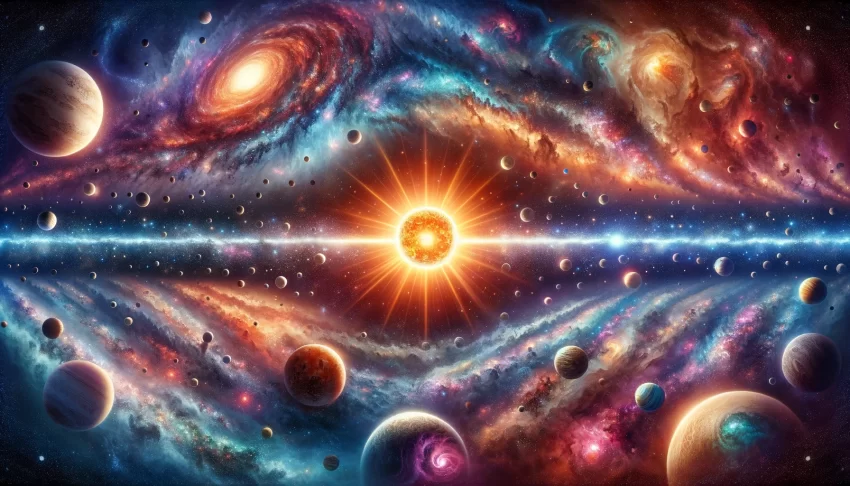| Listen to our audio presentation: A Journey Through the History of Quantum Mechanics |
The theory of relativity, primarily developed by Albert Einstein in the early 20th century, stands as one of the monumental pillars shaping modern physics. This theory, which comprises two parts—Special Relativity and General Relativity—is not only a fascinating scientific achievement but also an elegant illustration of how our universe works.
Special Relativity, introduced in 1905, sprung from an attempt to reconcile the laws of electromagnetism with those of mechanics. Central to Special Relativity is the idea that the speed of light in a vacuum is constant and independent of the observer’s motion. This theory brought forward groundbreaking concepts such as time dilation and length contraction, suggesting that time can slow down, and lengths can contract based on the speed at which an object is moving relative to an observer.
Perhaps the most famous equation derived from Special Relativity is E=mc², which shows that energy (E) and mass (m) are interchangeable; they are different forms of the same thing, with the speed of light squared (c²) acting as the conversion factor. This equation not only deepened our understanding of atomic energy but also paved the way for developing nuclear power and weapons.
General Relativity, proposed by Einstein in 1915, expanded the concept of relativity to include gravity. This theory posits that what we perceive as the force of gravity in fact arises from the curvature of space and time caused by mass and energy. According to General Relativity, a massive object like Earth warps the fabric of spacetime around it, and this curvature directs the motion of objects and light near it. This was a revolutionary shift from Newton’s view of gravity as a force acting at a distance.
General Relativity has been confirmed through numerous experiments and observations. For example, it accurately predicts the orbit of Mercury around the Sun, which Newtonian physics could not explain entirely. It also predicts the bending of light by gravity, which has been observed during solar eclipses when light from stars passing close to the Sun is bent, causing the stars to appear slightly out of position.
In the broader cosmos, General Relativity helps explain the dynamics of galaxies, the physics of black holes, and the expansion of the universe itself. It has also led to the prediction of phenomena such as gravitational waves—ripples in spacetime created by massive moving objects, which were directly detected by the LIGO observatory in 2015.
The implications of relativity are not confined to the realm of astrophysics but also extend to everyday technology. For instance, the Global Positioning System (GPS) needs to account for the effects of both Special and General Relativity to provide accurate location information. Without corrections for the time dilation experienced by satellites relative to Earth, GPS systems would fail to function accurately.
In conclusion, the theory of relativity is not just a cornerstone of theoretical physics but also a testament to human curiosity and the quest for understanding the fundamental principles of nature. Its development has not only illuminated some of the most profound questions about the universe but also has practical applications that reach into our everyday lives, proving the power of scientific inquiry and innovation.

